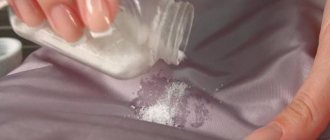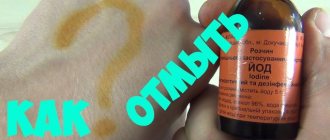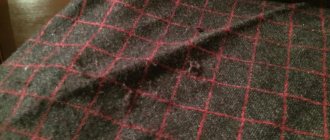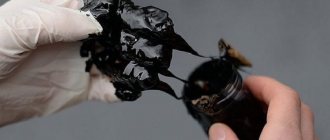Diesel fuel (diesel fuel) is a liquid product that is actively used as a solvent in technology and household applications, and for refueling cars. The main disadvantage of a universal product is that it can heavily contaminate shoes and clothes, leaving a greasy mark that is quite difficult to get rid of.
When clothes are contaminated with gasoline or diesel fuel, many do not try to find out how to properly remove the stain or remove the unpleasant odor. If you get your overalls, fashionable jeans or a warm jacket dirty, you shouldn’t discard the items; you can easily wash them and remove the pungent “aroma” of fuel forever.
Thanks to some tips, improvised materials, and folk remedies, it is possible to remove not only a fresh stain, but also one that has already become firmly established on the fabric.
How to get rid of old stains and fuel traces
Proven folk methods, improvised means and household chemicals will help remove old stains. It is better to remove contaminants from gasoline and diesel fuel immediately, otherwise the liquid will be absorbed into the fabric and fixed in it.
The best remedies for old stains:
- Gasoline. When the marks have dried and become embedded in the material, it is recommended to use household gasoline, but not automobile gasoline. As for household products, they have a high degree of purification. It is sold in all hardware stores. Take a piece of cloth, soak it in gasoline and wipe off the mark. The direction of movement is towards the center from the edges, so as not to increase the area of contamination. To manipulate, you will have to change the flap several times. Continue rubbing until the dirt comes off. After this, rinse with water and machine wash.
- Stain remover. Wash overalls, jeans or a shirt with old stains in powder, rub traces of diesel fuel by hand. Dilute two caps of a good quality stain remover in three liters of water. Soak the items for thirty minutes, rinse and wash with powder.
- Paper . A hot iron and white paper will help remove stubborn greasy marks. Wash and dry the product. Place paper on both sides of the dirty area and iron it with a medium-heat iron. After performing the heat treatment, an oily imprint will appear on the surface of the paper. Replace the paper and continue ironing until the dirt comes off.
Professional stain remover
By following the recommendations, you can remove traces of gasoline, diesel fuel, and also overcome the bad smell.
The best laundry detergents
A powerful way to combat the smell of diesel fuel is to ventilate in the open air. Given the fact that this substance is volatile, the vapors disappear within two weeks. As for dirt, it is very easy to remove grease.
Top 4 effective ways:
- Washing powder. Soiled clothes will become fresh and clean again if you wash them using powders such as Tide and Ariel. You should not use a washing machine; hand washing in a basin works best. Hang the product in the fresh air, dry, and ventilate.
- Dishwashing gel . The fight against traces of diesel fuel and gasoline at home will be crowned with success if you use regular dishwashing liquid. Dissolve 3 tablespoons of gel in a bowl of warm water, shake with your hands, foam will appear. Immerse clothes or a towel in the soapy solution, leave for an hour, then wash by hand.
- Starch . The essence of the technique is that a special active mixture is used, where the base ingredient is potato starch. Recipe: thoroughly mix a few drops of ammonia, turpentine, adding one teaspoon of starch. An old toothbrush will come in handy; you should use it to apply the paste to dirty areas, rubbing in smooth, soft, gentle movements. Leave for two hours, wash with powder.
- Heat treatment . The specificity of the technology is to use a hot iron, spending a minimum amount of effort and time. Algorithm of action: wash the oily mark with powder, place a rag underneath, iron the item with a heated iron. Having completed the manipulation, you will be able to make sure that all the smell is gone and the stain has disappeared. It is important to remember that this option cannot be used for delicate products.
Stain removers
Effective ways to deal with fresh stains
Removing diesel and gasoline stains from colored and white clothes is one of the main tasks that many families face. This is due to the rapid growth in the number of vehicles coupled with the need to solve problems that arise during operation.
The sooner proper washing of items (T-shirt, trousers, shirt) begins, the easier it will be to remove traces of fuel. To save a stained product, you must immediately sprinkle it with salt and rub it in a circle, but without smearing the dirt.
When it is a terry towel or a woolen sweater, leave the treated item for one hour. After the specified time has passed, place in the machine and wash with powder and gel. The effect will be noticeable immediately; salt is an excellent absorbent.
Diesel stain on jeans
The best means for removing traces of diesel fuel and gasoline:
- Detergent. When it is not possible to manipulate salt, dish gel will help remove the stain. Detergent is applied to the surface of the product, foamed, and left for 15 minutes. Then it is recommended to wash on a suitable cycle. A special conditioner that is added during washing will help get rid of the pungent odor.
- Baking soda + detergent + laundry soap. The proposed folk method will help remove diesel fuel from clothes. Mix all the ingredients in equal proportions, make small shavings from the soap, you get a homogeneous mass. Take 3 tablespoons of the mixture, dilute it in three liters of water, pour over dirty clothes and leave for half an hour. Rinse with running water, immerse in the drum of the machine, add powder, set the appropriate mode.
- Laundry soap. A cheap remedy saved a huge number of damaged things. Thanks to the correct use of soap, it is possible to clean dirt of any origin. Soak the product with warm water, lather traces of gasoline and diesel fuel with laundry soap, you should get a thick layer. Leave for four hours. If the dirt is too large, a concentrated soap solution will do. Grate half the block and dilute with two liters of warm water. Soak the laundry in the resulting liquid for four hours, then wash thoroughly by hand, paying attention to dirt. Each spot is treated with a special brush using rhythmic, active movements. Rinse with clean water. Dry in fresh air to remove the smell. The proposed recipe can be used for colored items.
- Automotive paste. Every car owner must have a cleaning paste. The method of application is very simple: apply the indicated product to the area of contamination, leave for 15 minutes. Rinse and machine wash.
- Butter and lemon. An effective, affordable and budget-friendly method is a mixture of vegetable oil and lemon juice. The components are mixed in equal proportions and rubbed into the contaminated area. After ten minutes, you can rinse the item and wash it with powder. This is an ideal product if you need to wash items made from rough fabrics, jackets, jeans.
- Ammonia. Ammonia will help to wash white clothes from diesel fuel. Dissolve 20 ml of alcohol in two hundred milliliters of water, moisten the swab, and then treat the dirty area. It is advisable to wipe until it completely disappears. With active friction it will take about 2-3 minutes.
ARTICLE FOR YOU
How and with what to wash and remove iodine stains from clothes and linen
The best products to remove traces of diesel fuel
The noted methods are not final, but many people use them, achieving positive results.
Fighting unpleasant odor
After the stains from clothes and shoes are removed, you need to take measures to get rid of the terrible, pungent smell.
- Toothpaste . Mint paste will help remove the harshest aroma. Dilute 2 tablespoons of toothpaste in 200 ml of water and pour over the washed areas of the product. A simpler option is to spread a thick layer on the area where the gasoline got in. Leave in this condition for at least two hours, rinse thoroughly and dry in fresh air.
- Special conditioner. The most reliable and effective way is to rinse in a concentrated fabric conditioner designed for washing clothes. Air dry, rinse again and hang outside again.
- Prolonged ventilation. A simple and quick method that removes the odors of diesel fuel and gasoline. The washed product can simply be hung in the fresh air and left for several days. This will allow the most pungent aroma to dissipate.
- Kerosene. No matter how strange it may sound, but thanks to kerosene you can eliminate the smell of diesel fuel. Use exclusively household kerosene, add it to a bowl of cold water and soak the clothes for thirty minutes. Rinse and hang outside.
How to eliminate fuel odor from a vehicle
Cars are an integral part of modern life; it is not a luxury at all, but a convenient, fast, comfortable way of transportation. Despite the comfort in the cabin, soft seats, if an unpleasant, pungent smell of fuel appears inside, staying in it becomes uncomfortable. In this case, you should find out how to remove odors from the car interior.
The presence of a fuel smell in the cabin can cause harm and damage to the health of not only the driver, but also the passengers. There is a risk of developing the following symptoms if you inhale the vapor for a long time:
- nausea;
- headache;
- weakness;
- irritability;
- dizziness.
To avoid such a clinical picture, it is advisable to learn ways to help remove odors from the interior.
Quality wash with shampoo
Popular, effective techniques:
- Quality wash with shampoo. Checking its source will help get rid of fuel vapors. It is necessary to inspect the trunk and carpets to look for contamination from diesel fuel and gasoline. Having discovered a place of contamination, it is recommended to wet clean the trunk and interior using car shampoo. You can use the services of a car wash, which uses professional detergents.
- Coffee . Ground coffee will help neutralize the strong “aroma”; sprinkle it on the stains. This product contains valuable oils that absorb external odors. The cheapest variety will do; you don’t have to buy expensive coffee.
- Dish balm. Gasoline and diesel fuel are oily chemical products that leave behind greasy residues. If you find dirt on rugs or upholstery, it is recommended to use a regular dishwashing detergent. The secret is that washing balms contain a unique chemical formula that can break down fats. They contain aromatic fragrances, they will help eliminate the unpleasant odor. The best method is to pour the liquid onto the stain, leave it for a while, then rinse with water.
- Baking soda . The area of contamination is treated with sodium bicarbonate, the duration of exposure is no more than a day. Sprinkle the dry powder onto the dirty spot and vacuum it after twenty-four hours; this will help remove the smell from the car interior.
- Vinegar . A proven grandmother's method that will help clean the trunk and interior of a vehicle. Pour 9% vinegar into a spray bottle and spray over the contaminated area. Ventilate during the day.
In addition to the options listed, simple ventilation will help get rid of unpleasant odors. Open the hood, doors, trunk to create a draft. The optimal duration of such ventilation is all night.
Thus, removing stains from gasoline and diesel fuel is very simple; improvised, inexpensive products available in every home will do. All proposed options and methods are distinguished by accessibility, safety, and high efficiency.
Use these recipes very carefully, taking into account the type of fabric and degree of contamination. To avoid serious problems with clothing, you should use diesel fuel and gasoline more carefully.
How to remove gasoline smell from clothes
Many housewives are afraid not only of the smell, but also of gasoline stains. However, they can not always be seen on things doused with flammable substances. Very often, only consequences in the form of an unpleasant odor are observed. Therefore, if there are no stains, then the soiled clothes can not be washed at all, but only aired for several days. There are several recommendations that can help remove the smell, which should be applied in such a case:
- clothes should be hung out in the fresh air: it is advisable that they be exposed to a draft, which will allow gasoline vapors to evaporate faster;
- A regular fan can also help with weathering. If you hang an item on the balcony and point a fan at it, you can eliminate the smell in just a day;
- The best option is to hang the clothes in the frosty air (you can slightly moisten them), or during the rain.
Attention! You won’t be able to remove the smell quickly; you need to be patient.
How to remove the smell of gasoline from clothes using traditional methods
Many housewives know that you can get rid of the smell of gasoline from clothes using traditional methods. Among them there are easy-to-follow methods and more complex techniques:
- The use of soda ash. Dissolve a few tablespoons of soda in water (the temperature should not exceed 50 degrees), soak clothes in it, rinse and put the item in the washing machine. During automatic washing, it is important, in addition to powder, to add aromatic fabric softener, and also turn on the additional or enhanced rinse mode to accurately remove the unpleasant aroma.
- Using table mustard. Pour half a pack of dry mustard powder into a bowl of warm water and mix thoroughly until the mustard dissolves. Soak the soiled item in a basin and leave for at least 3 hours. Then the clothes should be wrung out and put in the washing machine. Add the necessary detergent to the powder compartment, and pour the rest of the mustard directly into the drum, which will help completely remove the smell.
- For heavily soiled items that give off a persistent pungent odor, it is necessary to use a more complex composition. Mix vinegar, soda and boron in equal quantities. Add the mixture to a bowl with a small amount of water, put the item there for 15 - 20 minutes. Then the product is washed with powder in warm water. In this case, it is important to remember that the above components can affect the color of the fabric, so they should be used only on things that you don’t mind spoiling, or on light-colored fabrics.
- An effective method is to wrap clothes in newspaper. To do this, take something scented with gasoline, wrap it in several layers of newspaper, pack it in a plastic bag and leave it there for 7-10 days. During this time, the porous thin paper will absorb all the unpleasant odors, and the item will only need to be aired in the fresh air for 24 hours to completely remove the odors.
- Ammonia can also eliminate odor. To do this, you need to pour ammonia into a spray bottle and treat the entire surface of the soiled item with the liquid. After this procedure, the product must be washed with regular powder and aired.
- An excellent solution to combating the smell of gasoline is to use special fragrances for linen, as well as essential oils (it is best to use citrus scents or pine needle oils). They must be added to a basin of water where the product will be washed. Then the item needs to be hung in a draft for several days.
We recommend reading: Baking soda: beneficial properties, uses, how to take
How to get rid of the persistent smell of gasoline on your favorite clothes?
A beauty in the garage always requires attention, the cost of which is specific contamination of clothes. Why, sometimes after a regular visit to a gas station the question arises of how to remove the smell of gasoline that has soaked into your favorite trousers. Unfortunately, this issue is not resolved very quickly, and there are a number of mistakes that you need to be wary of when trying to wash soiled items.
Methods for removing diesel stains
In an attempt to remove diesel fuel from clothes, many housewives resort to various methods, from folk remedies to strong chemicals. But not all of them can be equally effective and safe.
- Folk remedies are very effective, but some of them (ammonium, citric acid, etc.) can only be used on white fabrics. It is also worth noting that products such as soda, salt, gasoline or paste require repeated use, especially if the affected area is quite large or the contamination is old.
- Household chemicals can be called more effective, but their use also depends on a number of factors:
- fabric type and density;
- product color.
When trying to wash a product from diesel fuel, you may encounter some problems, the main one of which is the formation of stains on the fabric. In some cases, the housewife manages to remove the dirt, but traces of it are eaten away so much that none of the proposed methods can cope with the consequences of cleaning. This can happen for several reasons:
- the product was chosen incorrectly;
- When removing the stain, too much physical impact was applied: in other words, the stain was simply wiped away by rubbing diesel fuel into the depths of the fibers.
During the cleaning process, it is important to follow safety rules. Since diesel fuel is a petroleum product, the contaminated area may ignite. Therefore, it is better to carry out work in a ventilated area and away from the source of combustion.
Attention! Smoking during cleansing is also strictly prohibited.
What should you not do?
First you need to find out what can worsen the situation so that you don’t accidentally go down the wrong path. There are only two serious problems that an inexperienced person can make.
- Wash things in an automatic machine. In this way, it will not be possible to get rid of the unpleasant odor quickly, but the washing unit will absorb unpleasant fumes and will certainly transfer them during the subsequent washing of a new batch of clothes. You will have to accept that washing will only be done by hand.
- The desire to instantly get rid of stains often turns to bleach. This should not be done until the smell of gasoline remains on clothing, since the two active substances will immediately enter into a chemical reaction. The result is toxic fumes and your poor health.
In addition, there is another sad news: you can’t get rid of the smell quickly. To wash it, you will have to carry out several lengthy procedures, so first prepare other things from your wardrobe for today's wear, and only after that begin to silently suffer from gasoline fumes.
What to do if gasoline gets on your clothes
First of all, the scale of the problem is assessed. Further actions to bring the item into proper form depend on the volume. If the gasoline stain is small, then it is enough to carry out local measures, but if there are significant traces of gasoline on clothing, a fundamental approach will be required. So, how to wash clothes in gasoline, and what to do first:
- It is necessary to remove soiled clothing. If it is impossible to clean on site, to eliminate some of the odor, you need to ventilate the item in a draft or open area. Then pack it in a bag and deliver it home.
- You should not get into a car wearing clothes with fresh stains from fuel and lubricants - the interior will be dirty, and the smell will persist for a long time. If such a need exists, you need to take preventive measures, for example, use a cushion made of waterproof material on the seat and drive with the windows slightly open (when the air conditioner is on, the smell will take hold in the cabin filter).
- The decision to clean the stain in the washing machine without first preparing the clothes will lead to the fact that subsequent washing of other items will be accompanied by the smell of gasoline.
- To avoid poisoning, do not use chlorine-containing cleaners. Benzenes in interaction with chlorine cause a chemical reaction with the active release of substances harmful to humans.
Important! The fabric, when exposed to gasoline and other liquids of the fuel and lubricant group, acquires the property of being easily flammable. In this regard, drying over an open fire source to eliminate odor is not recommended.
If the smell is not very intense
Sometimes you can get lucky and the amount of fuel on the fabric will be negligible. If the stains are not noticeable at all and only the smell indicates traces of the problem, the item does not need to be washed. This type of fuel contains volatile compounds, which themselves can erode in fresh air. To do this, you need to perform a number of actions.
- Hang clothes in the fresh air, preferably in a draft. Then the weathering process will take place faster.
- You can get rid of an unpleasant odor even faster by pointing a household fan at the problem area. The air flow will circulate at a higher speed, and evaporation will take place in a shorter period of time.
- It’s great if you can hang things out in the frosty air. The acquired freshness will not remind you of the trouble that happened.
Despite a small ingress of fuel, clothing can be completely restored no faster than in a few days, or even weeks.
Are you going to hang clothes in your room? Make sure no one in the family has a fuel allergy. In addition, some people get headaches from the evaporation - the fumes are poisonous after all. It’s best not to take risks and remove things from the living space.
How to remove the smell of gasoline
- Washing powder. Wash the item in a basin with a powder that has a pronounced fragrance. Take the product out into the fresh air to dry and ventilate.
- Soda. Prepare a solution of soda at the rate of 4 tablespoons per glass of water and distribute the resulting mixture onto the contaminated area. After an hour, wash the item in your usual way.
- Ammonia. Using a cotton pad or piece of soft cloth, apply a small amount of ammonia to the problem area and wash with any detergent.
- Fabric deodorants. The stores offer a wide selection of products to combat unpleasant odors. It is possible that these deodorants will help solve the problem.
If the stain is large
Large traces of gasoline can be washed off. This must be done in a basin; the water temperature should be selected depending on the fabric. You can use store-bought detergents for washing. Tide and Ariel are good choices - high-quality powders with a strong odor. For less delicate fabrics, choose dishwashing liquids that work more actively with odors and active substances.
For large or ancient stains, it is imperative to divide the washing into two stages: soak in the evening and leave to get wet until the morning, then finish washing and dry the item in the same way as airing. At the same time, continue working in the morning after changing the water. The night one absorbs the chemical composition of gasoline.
There are also a number of folk recipes that will help remove stains and thereby get rid of the smell.
- Add 2-3 drops of turpentine and ammonia to 1 tablespoon of starch, mix thoroughly and apply the mixture with a toothbrush to the dirty surface. Rub lightly, then wash as usual.
- Rub with laundry soap, which removes foreign odors well. Next, rinse and wash with powder for greater effect.
- Baking soda is great for removing odors. Dip a napkin in a concentrated solution of soda, apply the solution exactly to the right place and after half an hour wash it with powder, after rinsing the item.
- If the item is heavily soiled, mix equal parts boron, soda and vinegar, soak for 15 minutes and wash in warm water. Rinse thoroughly so that the active mixture does not change the color of the fabric.
- You can fill a spray bottle with ammonia and apply it evenly to the surface. Then lightly rub, rinse and wash with usual detergents.
- The original method is to wrap the item in newspapers, then pack it in a plastic bag and leave it there for a week. Thin and porous paper will absorb the smell well, after which all that remains is to ventilate the clothes in a draft.
Supermix for cleaning
You will need:
- turpentine,
- ammonia,
- White clay,
- starch,
- brush.
Process technology:
- Take the indicated “ingredients” in equal parts and mix thoroughly.
- Apply the resulting slurry to the fuel oil stain and leave for a couple of hours until it dries.
- Remove the dried mixture with a brush and wash the jeans.
This paste is not aggressive towards fabrics, so the likelihood of ruining the item is minimal.
Thermal method
Gasoline's ability to evaporate can be used for good. If you are not allergic to fumes, you can use an iron to speed up the process of removing the unpleasant odor. In this case, you can give up trying to wash the stain for a couple of days. To do this you need:
- Wipe the problem area thoroughly with washing powder;
- rinse the area;
- lay out the ironing cloth, cover with a clean cloth (rag);
- iron with a very hot iron (depending on the quality of the fabric, select the highest temperature setting).
After this, the smell will be removed with the vapor, and there will be no stain left either.
Means that can be used to wash things stained with gasoline
The most powerful effect on the odor caused by a diesel fuel stain on clothing is provided by ordinary ventilation in the fresh air.
The composition of the substance is volatile, due to which its vapors completely disappear within a certain period of time: 2-14 days.
And the diesel fuel stain itself on clothes can be washed off quite simply - using one of the many times tested means and methods.
Method No. 1 - washing powder
In this case, washing powder will help achieve the desired cleanliness and freshness. It is best to choose a name that is famous for its strong smell: for example, “Ariel” or “Tide”.
As in the above option, you should not resort to a washing machine. Washing in a basin will solve the problem.
Finally, the washed item should be hung out in the fresh air and allowed not only to dry, but also to be properly ventilated.
Method No. 2 - dishwashing liquid
To get rid of diesel fuel stains at home, you can also use dishwashing liquid.
In this case, the product is dissolved in a basin, and the soiled item is soaked in the resulting solution. It must be kept in liquid for at least 30-40 minutes.
After this, you can proceed to hand washing.
Method No. 3 - starch
This technology is based on the use of a special mixture, the main component of which is starch.
To make a mix, you need to stock up on the following handy tools:
- 1 teaspoon potato starch;
- a few drops of turpentine and ammonia;
- an unnecessary toothbrush.
When preparing the mixture, you need to pay maximum attention to thoroughly mixing all its components. Using a toothbrush, apply the mixture to the stain and rub it into the fabric with soft, gentle movements. Then you can proceed with regular washing - with powder.
Method No. 4 - heat treatment
The peculiarity of this type of cleaning is that it is essentially heat treatment. The iron allows you to remove dirt with minimal time and effort.
The sequence of actions in this case will be as follows:
- the contaminated part of the material is washed with ordinary washing powder;
- then a clean rag is placed below;
- The item is ironed with a hot iron.
Upon completion of the procedure, you can make sure that the gasoline smell and traces on clothing have completely disappeared.
Simple remedies
Among them, it is worth noting, first of all, mustard and soda ash. Each method involves making an appropriate solution and soaking clothes in it.
In the first case, the item needs to be kept for several hours, in the second - no more than an hour. When exposed to mustard, wash as usual, in a machine, but with the addition of mustard powder. In the case of soda, you need to wash with fabric softener and an additional rinse cycle.
Regular use of a vehicle teaches not only how to get rid of certain problems that arise, but also caution, accuracy, and the ability to avoid situations fraught with new worries and troubles.
Getting rid of the smell of gasoline on clothes is not as easy as it might seem at first glance. Often, one wash using laundry detergent or fabric softener is not enough. Therefore, we have to resort to more complex measures and the use of various means, including folk ones.











